Can You Hammer in a Screw? (A Handyman Answers)
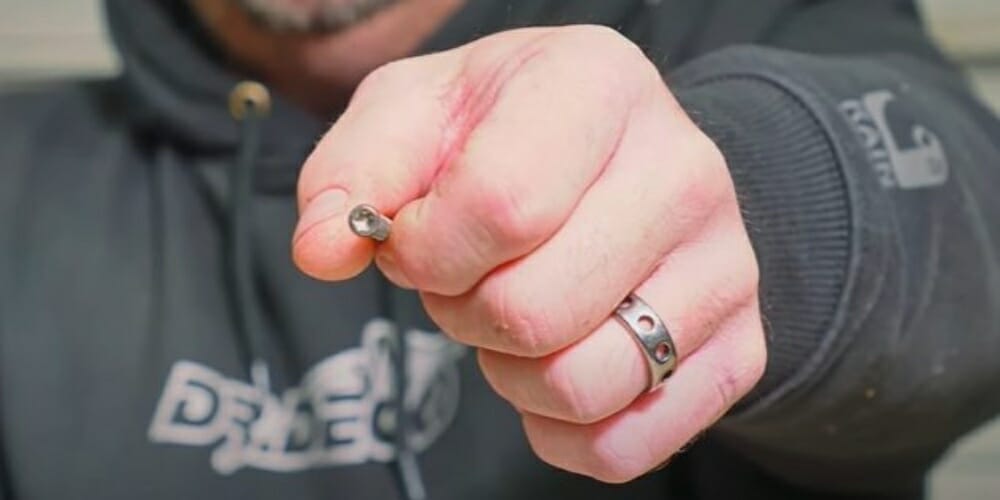
What if you don’t have a screwdriver available on hand? Or what if the screw head is too worn for the screwdriver?
The best solution is to use the tools that you already have. As a handyman, I have found alternate solutions for driving in a screw many times before, and here I’ll teach you what I have learned.
In general, yes, you can hammer in a screw with a few caveats, this is usually done when the screw is stripped, and you need to be careful since it can damage the screw or if done incorrectly, create a hole that is unstable for holding larger weight.
I will go into more detail below.
When Should You Hammer in a Screw?
There are certain situations where hammering in a screw becomes necessary.
The first situation is when the screw has become stripped.
A stripped screw is a screw wherein the slots on the head are worn out. This makes it difficult for the screwdriver to grip the screw and effectively turn it. This can happen due to reasons such as:
- Usage of the wrong screwdriver type
- Old screws that are repeatedly screwed in and out
The second situation is when piercing through a material using a drive screw.
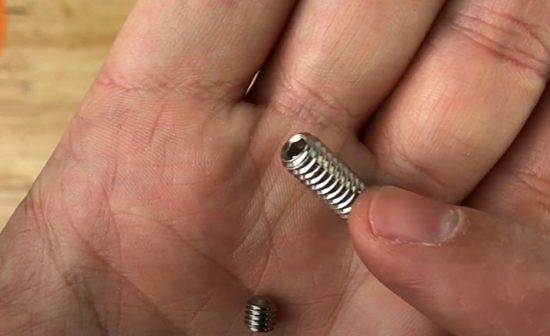
A drive screw is recognized for its flat screw tip. This makes it difficult to pierce it through materials like wood. Hammering in a drive screw allows it to penetrate through most materials successfully.
Tools Needed to Hammer in a Screw
Hammering in a screw requires three basic things.
- A Hammer
- Screw
- Nail (size should be smaller than the screw)
You might already have the mentioned materials. If not, then they can be easily bought from any local hardware store.
Getting Started – Learn How to Hammer in a Screw
Hammering in a screw is a simple process that requires only three steps.
It can be tempting to hammer in the screw directly, but there is a better method. This method ensures that the screw will be firmly embedded in the material for long periods.
Let’s get right onto learning how to hammer in a screw.
Step 1 – Create an Opening into the Material Using the Nail
The main usage of the nail is to create an opening in the material for the screw.
Take the nail and lightly hammer it into the material. Don’t fully embed the entire length of the nail. It should only sink in for about 1/4 the length of the screw to be used.
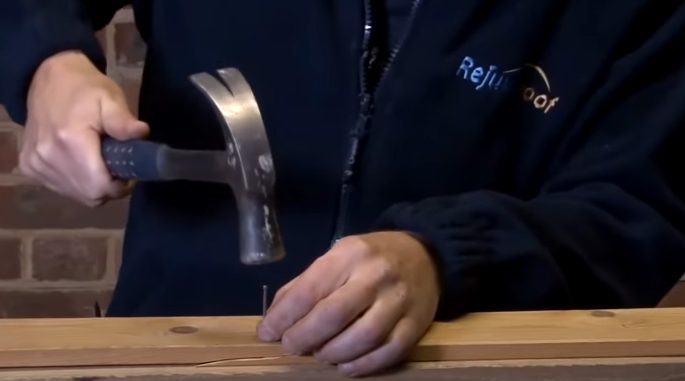
This step is done to create an opening for the screw. Screws are generally wider than traditional nails due to the threads around them. Those threads can make the hole larger than needed and cause the screw to pop back out. A smaller nail to create the opening gives just enough room for the screw to enter.
Remove the nail once it has created a deep enough hole.
Remember to pull upwards and avoid removing the nail at an angle. This prevents the hole from expanding.
Step 2 – Position the Screw on the Created Opening
Take the screw and position it directly onto the opening.
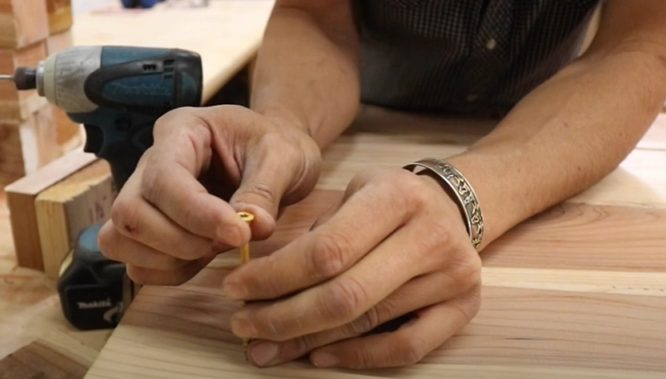
Lightly support the screw by holding it at the middle part. Don’t hold it too firmly. Put enough force into the grip to keep the screw upright.
Step 3 – Gently Hammer in the Screw
Hammering in a screw is not the same as hammering in a nail.
Screws are fragile around the thread area. They can easily bend or break at the location of the threads.
The force to be placed behind the hammer depends on the type and length of the screw. Longer screws are more fragile than shorter types due to having a larger thread area. In addition, more force is needed to embed a drive screw than needed for a pointed screw.
Less force is better than too much when hammering a screw.
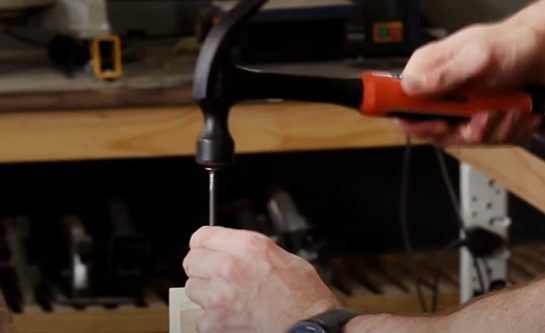
Start by gently tapping the screw head with the hammer.
Maintain the force if you feel the screw is being embedded. If not, then slightly increase the force behind the hammer. Don’t rush through this process, as doing so will increase the chance of breakage.
Keep the screw completely straight up during the entire hammering process.
Continue hammering just enough to get the screw into a firm position. There’s no need to embed it any further than that. You’ll want to make sure that the screw stays in place and that it can still be easy to remove in the future.
Things to Note when Using a Hammer Head on a Screw
There are a few things to note when hammering in a screw.
The first is to avoid creating a large opening.
The screw will not hold or be unstable if it is hammered into a large hole. It is easier to make a hole bigger than to make it smaller. Sealing a hole can be daunting since it requires other materials, such as putties and paint. Make sure to compare the size of the screw and nail before committing to the task.
Secondly, finding the right force to put into the hammer hit can be difficult.
Applying too much force to the hammer hit can cause damage to the screw head and the material it is driven into. This is because the hardness of the material can vary. (For example, hammering screws into wooden materials requires less force than if hammered into metal sheets.)
Lastly, hammering the screw at an angle can cause it to bend or break. (1)
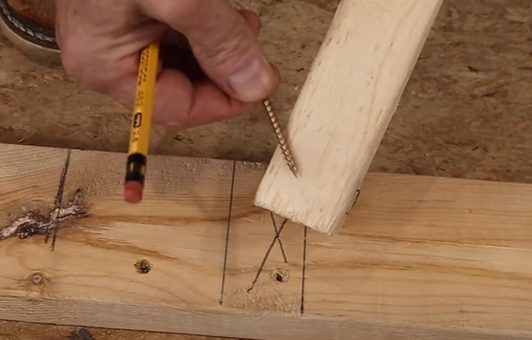
Screws are prone to snapping at the location of the threads. Immediately stop and reposition the screw if tilted or has begun to tilt during the hammering process. It is critical to ensure that the screw remains upright when being driven into the material.
Things to Expect When You Hammer in a Screw
Screws are not intended to be hammered into place.
A screw hammered into the material will often become a stripped screw. It also risks stripping the screw further (assuming that the screw was already damaged before). It can also damage the hole into which the screw is being hammered.
On the other hand, hammering a screw comes with the benefit of stronger holding strength. (2)
The threads around the screws allow them to grip the surrounding material firmly. Screws are known to stay in place longer than using ordinary nails. This allows screws to hold materials effectively.
Wrapping Up
There are certain situations wherein using a hammerhead is better than a screwdriver, such as embedding a stripped screw into a material. You need patience and a steady hand to complete this task effectively.
Take a look at some of our related articles below.
- How to stop water hammer in sprinkler system
- How to break a lock with a hammer
- What size drill bit for 8 screw metal
References
(1) angle – https://www.khanacademy.org/test-prep/praxis-math/praxis-math-lessons/gtp–praxis-math–lessons–geometry/a/gtp–praxis-math–article–angles–lesson
(2) benefit of stronger holding strength – https://www.washingtonpost.com/lifestyle/wellness/why-grip-strength-is-important-even-if-youre-not-a-ninja-warrior/2016/06/07/f88dc6a8-2737-11e6-b989-4e5479715b54_story.html
Video References
Deco Bliss
TeamPipeline.us
Thrive and Grow Gardens
BuildersSA
Herrick Kimball
